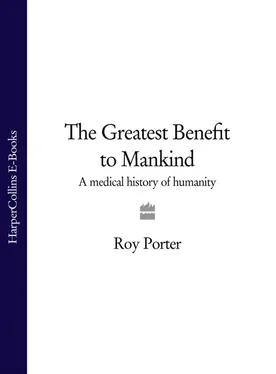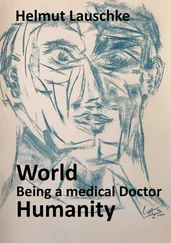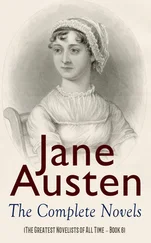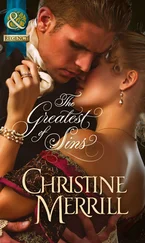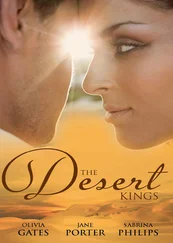Death affords a good instance of the scope for different interpretations in the light of different criteria. The nature of ‘physical’ death is highly negotiable; in recent times western tests have shifted from cessation of spontaneous breathing to ‘brain death’. This involves more than the matter of a truer definition: it corresponds with western values (which prize the brain) and squares with the capacities of hospital technology. Some cultures think of death as a sudden happening, others regard dying as a process advancing from the moment of birth and continuing beyond the grave. Bodies are thus languages as well as envelopes of flesh; and sick bodies have eloquent messages for society.
It became common wisdom in the West from around 1800 that the medicine of Orientals and ‘savages’ was mere mumbo-jumbo, and had to be superseded. Medical missions moved into the colonies alongside their religious brethren, followed in due course by the massive health programmes of the modern international aid organizations. By all such means Europeans and Americans sought to stamp out indigenous practices and beliefs, from the African witchdoctors and spirit mediums to the vaidyas and hakims of Hindu and Islamic medicine in Asia. Native practices were grounded in superstition and were perilous to boot; colonial authorities moved in to prohibit practices and cults which they saw as medically, religiously or politically objectionable, thereby becoming arbiters of ‘good’ and ‘bad’ medicine. Western medicine grew aggressive, convinced of its unique scientific basis and superior therapeutic powers.
This paralleled prejudices developing towards folk or religious medicine within Europe itself. The sixteenth-century French physician Laurent Joubert (1529–83) wrote a huge tome exposing ‘common fallacies’. Erreurs populaires [1578] systematically denounced the ‘vulgar errors’ and erroneous sayings of popular medicine regarding pregnancy, childbirth, lying-in, infant care, children’s diseases and so forth, insisting that ‘such errors can be most harmful to man’s health and even his life’. ‘Sometimes babies, boys as well as girls, are born with red marks on their faces, necks, shoulders or other parts of the body,’ Joubert noted. ‘It is said that this is because they were conceived while their mother had her period … But I believe that it is impossible that a woman should conceive during her menstrual flow.’ Another superstition was that whatever was imprinted upon the imagination of the mother at the time of conception would leave a mark on the body of her baby.
Elite medicine sought to discredit health folklore, but popular medicine has by no means always been misguided or erroneous. Recent pharmacological investigations have demonstrated the efficacy of many traditional cures. It is now known, for instance, that numerous herbal decoctions – involving rue, savin, wormwood, pennyroyal and juniper – traditionally used by women to regulate fertility have some efficacy. Today’s ‘green pharmacy’ aims at the recovery of ancient popular medical lore, putting it to the scientific test.
Once popular medicine had effectively been defeated and no longer posed a threat, scholarly interest in it grew, and great collections of ‘medical folklore’ and ‘medical magic’, stressing their quaintness, were published in the nineteenth century. But it is a gross mistake to view folk medicine as a sack of bizarre beliefs and weird and wonderful remedies. Popular medicine is based upon coherent conceptions of the body and of nature, rooted in rural society. Different body parts are generally represented as linked to the cosmos; health is conceived as a state of precarious equilibrium among components in a fluid system of relations; and healing mainly consists of re-establishing this balance when lost. Such medical beliefs depend on notions of opposites and similars. For example, to stop a headache judged to emanate from excessive heat, cold baths to the feet might be recommended; or to cure sciatica, an incision to the ear might be made on the side opposite to the pain.
Traditional medicine views the body as the centre or the epitome of the universe, with manifold sympathies linking mankind and the natural environment. Analogy and signatures are recurrent organizing principles in popular medicine. By their properties (colour, form, smell, heat, humidity, and so on) the elements of nature signal their meaningful associations with the human body, well and sick. For instance, in most traditional medicine systems, red is used to cure disorders connected with blood; geranium or oil of St John’s wort are used against cuts. Yellow plants such as saffron crocus ( Crocus sativus ) were chosen for jaundice, or the white spots on the leaves of lungwort ( Pulmonaria officinalis ) showed that the plant was good for lung disease, and so on. Sometimes it was argued that remedies had been put in places convenient for people to use. So, in England, the bark of the white willow ( Salix alba ) was valued for agues, because the tree grows in moist or wet soil, where agues chiefly abound, as the Revd Edmund Stone, of Chipping Norton in Oxfordshire, observed in his report to the Royal Society of London in 1763:
the general maxim, that many natural maladies carry their cures along with them, or that their remedies lie not far from their causes, was so very apposite to this particular case, that I could not help applying it; and that this might be the intention of Providence here, I must own had some little weight with me.
Maintaining health required understanding one’s body. This was both a simple matter (pain was directly experienced) and appallingly difficult, for the body’s interior was hidden. Unable to peer inside, popular wisdom relied upon analogy, drawing inferences from the natural world. Domestic life gave clues for body processes – food simmering on the hob became a natural symbol for its processing in the stomach – while magic, folksong and fable explained how conception and birth, growth, decay and death mirrored the seedtime and the harvest. The landscape contained natural signs: thus peasant women made fertility shrines out of springs. To fathom abnormalities and heal ailments, countryfolk drew upon the suggestive qualities of strange creatures like toads and snakes (their distinctive habits like hibernation or shedding skins implied a special command over life and death), and also the evocative profiles of landscape features like valleys and caves, while the phases of the moon so obviously correlated with the menstrual cycle.
Nature prompted the idea that the healthy body had to flow. In an agrarian society preoccupied with the weather and with the changes of the seasons, the systems operating beneath the skin were intuitively understood as fluid: digestion, fertilization, growth, expulsion. Not structures but processes counted. In vernacular and learned medicine alike, maladies were thought to migrate round the body, probing weak spots and, like marauding bands, most perilous when they targeted central zones. Therapeutics, it was argued, should counter-attack by forcing or luring ailments to the extremities, like the feet, where they might be expelled as blood, pus or scabs. In such a way of seeing, a gouty foot might even be a sign of health, since the big toe typically afflicted was an extremity far distant from the vital organs: a foe in the toe was trouble made to keep its distance.
In traditional medicine, as I have said, health is a state of precarious balance – being threatened, toppled and restored – between the body, the universe and society. More important than curing is the aim of preventing imbalance from occurring in the first place. Equilibrium is to be achieved by avoiding excess and pursuing moderation. Prevention lies in living in accord with nature, in harmony with the seasons and elements and the supernatural powers that haunt the landscape: purge the body in spring to clean it of corrupt humours, in summer avoid activities or foods which are too heating. Another preventative is good diet – an idea encapsulated in the later advice, ‘an apple a day keeps the doctor away’. Foods should be consumed which give strength and assimilate natural products which, resembling the body, are beneficial to it, such as wine and red meat: ‘meat makes flesh and wine makes blood’, runs a French proverb. The idea that life is in the blood is an old one. ‘Epileptic patients are in the habit of drinking the blood even of gladiators,’ noted the Roman author Pliny (AD C. 23–79): ‘these persons, forsooth, consider it a most effectual cure for their disease, to quaff the warm, breathing, blood from man himself, and, as they apply their mouth to the wound, to draw forth his very life.’
Читать дальше
